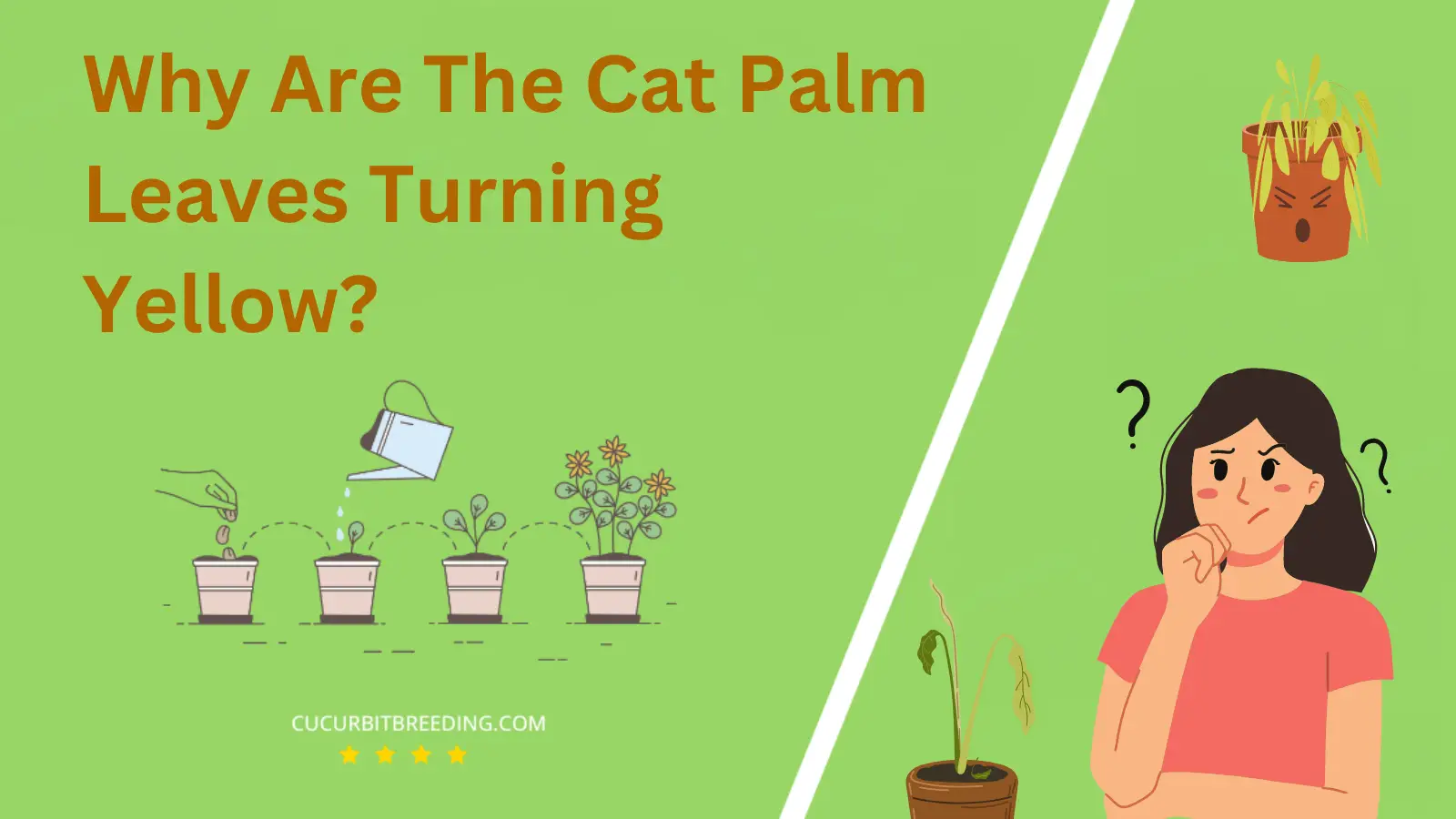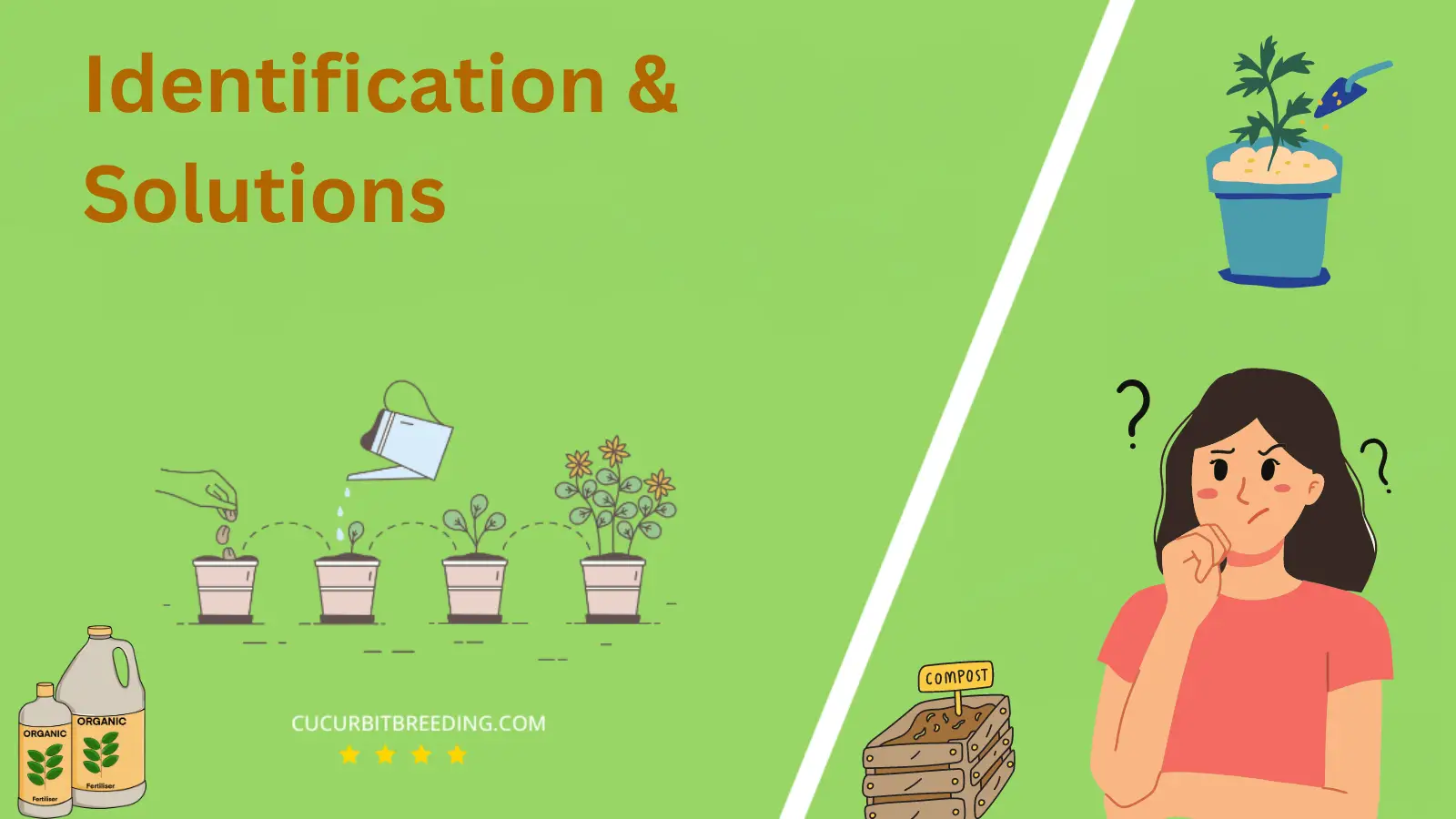
Cat Palm leaves turning yellow – a disheartening sight for any avid gardener. This common issue can transform your vibrant oasis into a paler version of its former self.
Is it due to improper care or is it signalling something more serious? Exploring this occurrence is not only important to restore your Cat Palm’s aesthetics but also to ensure its survival. The journey to revive the green starts…now!
Why Are The Cat Palm Leaves Turning Yellow?
1. Lack of sunlight
| Description | can cause chlorophyll degradation, resulting in yellowing leaves in the Cat Palm plant. |
|---|---|
| Solution | Increase sunlight exposure to prevent yellowing of cat palm leaves. |
Insufficient Sunlight Causing Yellowing of Leaves
Cat palm leaves can turn yellow due to a lack of sunlight. This happens because photosynthesis, the process of converting water, sunlight and carbon dioxide into food for the plants, is reduced. In this case, chlorophyll, the pigment which gives the plants their green color, fails to form adequately thus, the leaves can turn yellow.
Solution for Adequate Sunlight
To resolve this issue, adjust the plant’s location or the direction it faces to ensure it gets enough sunlight. Cat palms prefer indirect but bright light for around 6-8 hours each day. Try placing it near a north or east-facing window. Remember that too much direct sunlight can scorch the leaves, turning them yellow or brown. Always monitor the plant’s reaction to any light changes to ensure optimum health.
2. Overwatering
| Description | causes root rot, inhibiting nutrient absorption, leading to yellowing of leaves. |
|---|---|
| Solution | Reduce watering and improve drainage to prevent root rot. |
Overwatering is one of the most common reasons why Cat Palm leaves turn yellow. The plant is native to regions where there is naturally a high degree of water drainage, and its roots do not do well in soggy soil.
When overwatered, the roots become waterlogged and oxygen-starved. This leads to them becoming unhealthy, rotting, and eventually dying. The effect of the root damage then shows in the plant’s leaves as a yellow discoloration.
Mitigating overwatering involves adjusting your watering habits. Water your Cat Palm only when the top inch of the soil feels dry to touch. Using a well-draining soil mix can also help ensure that excess water will not stay in the root zone.
Additionally, make sure the pot has plenty of drainage holes and is not left sitting in standing water. This way, the roots can get the moisture they need, while excess water drains away, preventing root rot and leaf yellowing.
3. Underwatering
| Description | Insufficient water supply disrupts photosynthesis, reducing chlorophyll production, causing yellowing of cat palm leaves. |
|---|---|
| Solution | Increase watering frequency to provide adequate moisture for the cat palm’s leaves. |
The leaves of the cat palm can turn yellow due to underwatering because this leads to a decrease in the plant’s overall vitality. Underwatering can cause stress to the cat palm, making it unable to maintain its lush green foliage. As a result, the leaves turn yellow and the plant’s growth can be stunted.
To rectify this situation, you should ensure that the cat palm receives adequate water. The soil should remain lightly moist but not waterlogged, as this can lead to root rot. A general guide is to water the plant once the top 1-2 inches of soil is dry. Regularly monitoring the plant’s water requirements and adjusting your watering schedule accordingly can help prevent yellowing leaves.
In addition, it may be beneficial to use a water-soluble, balanced fertiliser once a month during the growing season. This will provide the cat palm with the necessary nutrients to stay healthy and maintain its vibrant color. Make sure to follow the package instructions carefully when preparing and applying the fertilizer, to avoid over fertilization which can be damaging to the plant.
4. Nutrient deficiency
| Description | Insufficient water supply disrupts photosynthesis, reducing chlorophyll production, causing yellowing of cat palm leaves. |
|---|---|
| Solution | Increase watering frequency to provide adequate moisture for the cat palm’s leaves. |
When a cat palm plant confronts nutrient deficiency, it is unable to perform vital functions necessary for growth and survival. Its leaves turn yellow as an initial sign that it is not receiving the necessary nutrients, as it is unable to conduct photosynthesis efficiently. This phenomenon occurs because the plant cells that contain chlorophyll, a substance crucial for photosynthesis and responsible for the plant’s green color, are degraded due to inadequate nourishment. This event creates a yellowing effect known as chlorosis.
To resolve this issue, you need to provide the cat palm with appropriate fertilizers. Fertilizers replenish the micro and macronutrients the plant needs to thrive. They should be balanced and specifically designed for palms, as they require unique nutrient combinations. Be careful not to over-fertilize as it can lead to salt accumulation that causes root burns. Also, ensure the palm is receiving adequate sunlight and water, and planted in well-draining soil to optimally absorb the supplied nutrients. Regular observance will help detect any deficiencies early and enable prompt rectification.

5. Pest infestation
| Description | Increase watering frequency to provide adequate moisture for the cat palm’s leaves. |
|---|---|
| Solution | Apply organic insecticidal soap to control pests and protect the plant from further damage. |
Yellowing leaves on a cat palm could be an indication of a pest infestation. In this case, pests such as spider mites, scale insects, or aphids suck the sap from the plant, disrupting its normal flow. This disruption leads to nutrient deficiency which in turn manifests as yellowing leaves.
To rectify this, start with identifying the specific pest causing the issue. In most cases, you can do this by closely inspecting the plant’s leaves for signs of the pests or any irregularities. Once you’ve identified the pest, you can proceed to treat the plant.
Non-chemical treatments such as washing the plant with soapy water or using a strong stream of water to dislodge the pests may be effective for minor infestations. In the case of severe infestations, you may need to resort to pesticide treatment. When choosing a pesticide, ensure to select one that is appropriate for the specific pest and safe for indoor use if the cat palm is kept indoors. Regular treatment is often necessary until the pests are completely eradicated.
Prevention is also crucial in avoiding a recurrence. Ensure the cat palm is well watered and not overstressed, as stressed plants are more susceptible to pest infestations. Regularly check the plant for early signs of pests and nip any infestation in the bud.
6. Environmental stress
| Description | such as nutrient deficiencies or waterlogging can disrupt chlorophyll production, causing leaf yellowing. |
|---|---|
| Solution | Provide consistent watering, ensure proper drainage, and place in a well-lit area with adequate humidity. |
Environmental stress can lead to yellowing of Cat Palm leaves. This kind of stress involves improper lighting, incorrect temperature, or over and under watering. Environmental stress disrupts the plant’s overall balance and hampers its everyday functions such as photosynthesis, which in turn results in yellow leaves as a sign of the plant’s distress.
To resolve this issue, firstly you need to assess the conditions in which your cat palm is being kept. If the plant is not getting enough light, relocate it to a well-lit area but avoid direct sunlight which can scorch the leaves. Secondly, make sure the temperature is kept consistent between 70-80°F, as sudden fluctuations can cause stress. Lastly, ensure the plant is watered adequately. Cat Palms require soil that is constantly moist, but not waterlogged. Overwatering can cause root rot, while underwatering can starve the plant, both leading to yellowing leaves.
7. Disease or infection
| Description | A disease or infection disrupts chlorophyll production, causing the leaf to turn yellow. |
|---|---|
| Solution | Treat with appropriate medication and practice good hygiene to prevent spread of disease or infection. |
One common reason for the yellowing of Cat Palm leaves is improper watering. Overwatering or underwatering can cause the plant to become stressed, leading to leaf yellowing. When a plant is overwatered, it’s unable to take in oxygen properly through its roots, causing the leaves to yellow and potentially fall off. Similarly, underwatering can lead to dehydration, causing the plant to turn yellow as it’s not receiving enough water to maintain its lush, green appearance.
Overwatering can be avoided by ensuring the plant’s soil is dry on the surface before watering again. It’s always better to err on the side of caution and not water a plant if you’re unsure. For underwatering, the solution would be to provide a consistent watering schedule. Take care to not water the plant too much at once; instead, provide it with consistent, small amounts of water.
The drainage of the pot also plays a role in both overwatering and underwatering. A pot with good drainage will help prevent water from sitting in the bottom of the pot, which can cause root rot and leaf yellowing. You can improve the drainage of your pot by adding perlite or sand to your soil mix, which will allow water to pass more freely through the soil.